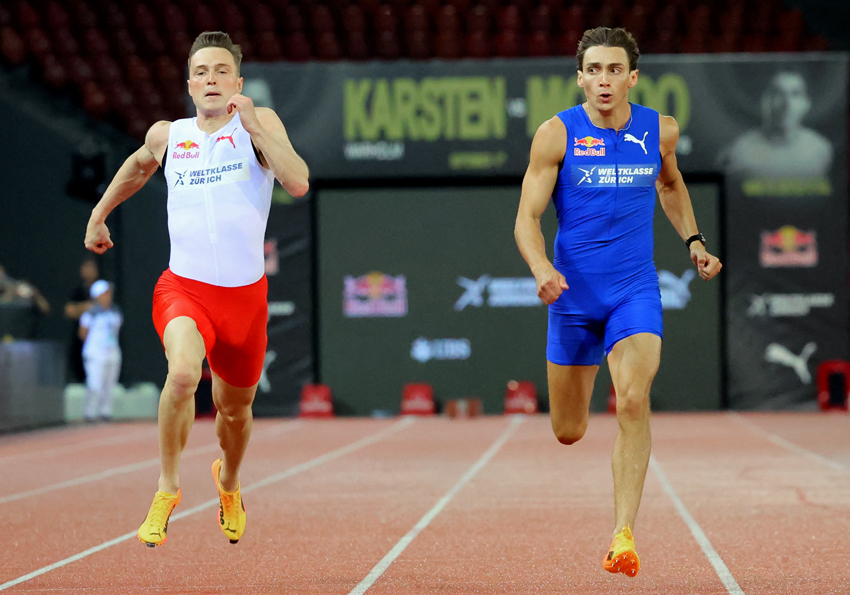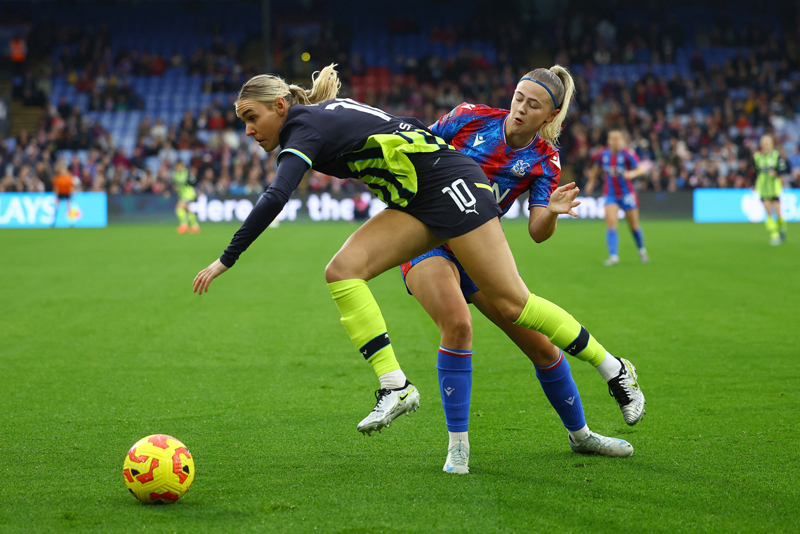Heart rate variability – the new messiah for endurance athletes?
Joe Beer looks at the increasingly popular use of heart rate data such as heart rate variability and asks whether such tools really do help athletes to train more effectively and reach new PBs...
The ability to assess the effects of different training modes, recovery methods and lifestyle factors is a powerful tool for endurance athletes. But where it was once simply a manual resting heart rate taken at the wrist or your waking-mood, technology has moved on, into the complex analysis of heart rate monitor (HRM) data, coupled with invasive tests, such as blood lactate measurement.
A good athlete can tell when they have reached their optimum training load, back off before injury strikes, and is always improving. However, I’ve yet to come across such a person! In reality, training must have an element of over-reaching in order to allow some new additional physical attribute to be bestowed on the athlete. To train within yourself is to never reach your potential.
An athlete who works with a coach has the first and most effective tool in the assessment of over-reaching — a second and external opinion. However, both parties need to be in regular contact and be ready to admit that the team needs to ‘ease up’. But this can be surprisingly hard if the pressure to perform is great due to (ironically) previous failures to perform on the day.
This explains why many professionals have turned to technology and asked ‘Can a reliable tool tell athlete/coach what they cannot discern themselves and can this info make for better training and racing outcomes?’ Back to the future The history of measurement of fatigue/ recovery has its first roots in resting heart rate (RHR). This is the number of beats per minute an athlete counts at rest, and is seen generally as a measure of fatigue or readiness to train. It’s generally assumed that if someone has trained and is fit, their RHR will be lower than Joe Average, who has around 70 beats per minute. Table 1 shows a typical (but flawed) interpretation of this relationship assumption in terms of RHRs and fitness.
Back to the future
The history of measurement of fatigue/ recovery has its first roots in resting heart rate (RHR). This is the number of beats per minute an athlete counts at rest, and is seen generally as a measure of fatigue or readiness to train. It’s generally assumed that if someone has trained and is fit, their RHR will be lower than Joe Average, who has around 70 beats per minute. Table 1 shows a typical (but flawed) interpretation of this relationship assumption in terms of RHRs and fitness.
Table 1 Example of chart purporting to show relationship between RHR and fitness
| Resting heart rate for men | #colspan# | #colspan# | #colspan# | Resting heart rate for women | #colspan# | #colspan# | |||||||
|---|---|---|---|---|---|---|---|---|---|---|---|---|---|
| Age | 18-25 | 26-35 | 36-45 | 46-55 | 56-65 | 65+ | Age | 18-25 | 26-35 | 36-45 | 46-55 | 56-65 | 65+ |
| Athlete | 49-55 | 49-54 | 50-56 | 51-57 | 51-57 | 50-55 | Athlete | 54-60 | 54-59 | 54-59 | 54-60 | 54-59 | 54-59 |
| Excellent | 56-61 | 55-61 | 57-62 | 58-63 | 57-61 | 56-61 | Excellent | 61-65 | 60-64 | 60-64 | 61-65 | 60-64 | 60-64 |
| Good | 62-65 | 62-65 | 63-66 | 64-67 | 62-67 | 62-65 | Good | 66-69 | 65-68 | 65-69 | 66-69 | 65-68 | 65-68 |
| Above Average | 66-69 | 66-70 | 67-70 | 68-71 | 68-71 | 66-69 | Above Average | 70-73 | 69-72 | 70-73 | 70-73 | 69-73 | 69-72 |
| Average | 70-73 | 71-74 | 71-75 | 72-76 | 72-75 | 70-73 | Average | 74-78 | 73-76 | 74-78 | 74-77 | 74-77 | 73-76 |
| Below Average | 74-81 | 75-81 | 76-82 | 77-83 | 76-81 | 74-79 | Below Average | 79-84 | 77-82 | 79-84 | 78-83 | 78-83 | 77-84 |
| Poor | 82+ | 82+ | 83+ | 84+ | 82+ | 80+ | Poor | 85+ | 83+ | 85+ | 84+ | 84+ | 84+ |
In 1957, a famous exercise physiologist called Karvonen recorded RHRs from subjects in a study to assess training effect of a 5-week regime, consisting of four to five runs of 30 minutes per week at around 70% of maximum heart rate (HRmax) – ie a moderate intensityAnn Med Exper Fenn 1957. 35(3):307-315. They noted on average a drop of around 4 beats per minute by the end of the study. Importantly however, this did not drop any further in those who were able to do more work by the 5th week.
Karvonen concluded that the typical variations of RHR are to a large extent irrelevant for measuring cardiovascular fitness. This is because the adaptation of heart rates during exercise is not strictly dependent on the type of adaptation during rest. And yet for many decades after, RHR was used as a tool to measure health, readiness to train and to predict race performances. Bragging about your ‘low resting heart rate’ was the runner’s, swimmer’s and biker’s version of the modern day Strava boasting!
Using heart rate data acquired during exercise as a monitoring tool has been an interest of mine for 30 years. As a coach, I have had access to heart rate data since the mid 1980s - thousands of files from world class athlete to keen amateurs. However, this has only made sense when interpreted along with other factors such as whether athletes were ill or tired etc. As far as RHR goes, it’s about as accurate as licking your finger to tell the weather!
HRV - the new messiah?
Using simple RHR as a tool to measure fatigue/ recovery/fitness is flawed and recording heart rate during exercise only makes sense in the context of other information such as your levels of fatigue, stress, illness etc. So is there a better method? The increasing affordability of digital technology has spawned a new type of heart rate monitor that records Heart Rate Variability (HRV). HRV is the non-invasive assessment of the tiny variation in time between consecutive heart beats. This constantly changing time, measured in milliseconds (ms) is specifically between the ‘R peaks’ in the heart’s electrical pattern (see figure 1).
Figure 1: HRV and beat-to-beat timing variability

This ECG trace shows 6 heart beats. The average beat-to-beat interval is 832 milliseconds – ie a heart rate of 72 beats per minute. However, there is quite a lot of variability in the beat-to-beat interval. Parasympathetic nervous activity decreases heart rate and increases variability, whereas sympathetic activity increases heart rate and decreases HRVExperimental and therapeutic medicine 2016. 11: 1531-1536. In plain English, this theory says that the fitter and fresher you are, the higher your HRV. If you are poorly recovered, tired, stressed or unwell, your HRV will decrease.
Rather than just recording a resting heart rate number, HRV looks inside every beat and then does mathematical computations (that to this day I have been unable to understand, nor need to!). In essence however, the fitter and fresher an athlete is, the greater should be his or her heart rate variability. But just how accurate and valuable is HRV? In a very recent meta analysis (a study that combines the findings from a number of previous studies), researchers looked at HRV research from 24 studies with over 350 athletes monitoredSports Med 2016. 46:1461–1486. The conclusion was that HRV was far from perfect; for example, one finding was that overload training causing a drop in performance resulted in higher HRV scores after exercise. This is exactly the reverse of what should be observed and could lead an athlete to train harder just at the time he/she needs to back off. Also, HRV at rest was not affected by overload training when you would expect it to decrease. The authors concluded that ‘the interpretation of HRV data is difficult without additional variables allowing for contextualisation of training’.
Another very recent study has looked at interval training and HRVECSS Vienna. Sports Medicine: Heart Rate Variability Conference Paper OP-PM66. July 2016. The aim of the study was to evaluate whether HRV monitoring was able to assess fatigue and recovery dynamics as well as performance adaptations during four-weeks of high-intensity interval training. The athletes completed a periodised four-week high-intensity interval training program based on three sessions per week. As well as measuring performance before and after the interval training block, HRV was measured daily upon awakening for six minutes under supine conditions two weeks preceding, during and two weeks following the intervention period.
It’s worth mentioning another HRV study published in 2013, which studied high level endurance athletes over a 4-year periodPLoS ONE 2013. 8(8): e71588. It found that averaged over the group as a whole, HRV was significantly lower in ’fatigue’ vs. ’no-fatigue’. However, there was tremendous variation between athletes; some athletes had low HRV levels when they were actually quite fresh and well recovered. Others had high levels of HRV when they were fatigued (see figure 2). In other words, what mattered was the HRV trend in each athlete – not the overall scores (that many HRV tools tend to focus on).
Figure 2: Individuality and HRV

Data plots over two months for three different athletes (represented by triangles, squares or circles). Top plot = HRV; bottom plot = resting heart rate. Black symbols = fatigued state; open = non-fatigued state. Note that the ‘triangle’ athlete tended to have much high recorded HRV values compared to the ‘square’ or circle athletes even at time when he was actually quite fatigued.
HRV benefits
Unlike lactate measurement, blood analysis for stress hormones or lab testing, HRV can be up and running in a matter of minutes. Using a standard Bluetooth heart rate monitor belt and a smartphone or tablet you can easily access HRV (see tech box overleaf). This makes HRV data quick to acquire. Moreover, by uploading onto the cloud, this data can then be shared with your coach, linked in with existing training or racing data (eg Garmin Connect, Strava, TrainingPeaks), and compared to previous data.
My hesitation with using HRV as a tool for all the athletes I help is that it provides masses of numbers, but is not the only metric to be relied upon. In other words, HRV is a clue but so too are other coach-athlete tools. These include an athlete’s ‘mood’, any recent illnesses, their training frequency, traffic light colouring of recent sessions – even their phone persona when they call me.
There may also already be a rich source of data in diaries, and from other team members or training partners that doesn’t require data analysis — just communication between the athlete and those around them. Indeed, many very successful athletes have done nothing more than listened to their body and skilled professionals around them. Having said that, HRV has its place — for example, when an athlete is going downhill, it can give a clear indication in terms of solid numbers.
Many companies are providing ways to measure HRV then store, manipulate and sell the data services that this new resource offers. Like many hi-tech data approaches, HRV may be valuable in the right hands but many athletes can end up shelling out hardearned cash with no real pay back. Overall, it’s fair to say that HRV can offer benefits but only IF it is used in conjunction with other monitoring tools.
Can HRV monitoring help beat injury?
Though the hypothesis is fairly new, there is a growing belief that HRV could be a useful tool in helping to stave off some over-use injuries. It is suggested by a New Zealand group of sports scientists that the tissue response to growing trauma may modulate the autonomic nervous system in a way that may be measurable using HRVMedical Hypothesis 2016. 87 pp1-7.
This offers the exciting possibility of HRV not only allowing peak performance through reduced fatigue but also greater consistency. If mounting micro-trauma in the body is flagged up, an athlete’s mixture, volume or intensity of training adjusted to allow more tissue recovery. As yet there is not a solid body of evidence demonstrating that this model can help reduce injury, but a 3-month, 30-athlete study is underway by the Kiwi team.
Tech box: products to consider
*POLAR
(www.polar.com/uk-en) one of the first companies to offer HRV analysis was Polar. With many running and cycling-specific models that can now compute HRV, Polar is probably the leading brand for HRV. The H7 belt (figure 3) is compatible with many non-Polar technologies that pick up HR and HRV and display it on phones and tablets. Polar has used HRV analysis for its ownIndex and Zoneoptimizer features for many years.
Figure 3: POLAR H7 Belt

*ITHLETE (www.myithlete.com/)
ithlete offers a full range of mobile (Android, ioS and desktop applications) and HRV data services. These are cost-effective and compatible with various brands of Bluetooth HR belt. The ithlete website is very helpful and is kept up to date with research findings.
*ELITE HRV (www.elitehrv.com/)
This is a rather more refined App than ithlete and provides more of a data storage, manipulation and control centre service. Elite HRV takes Android or ioS data and helps coaches manage athletes or teams. There’s also a free App to get you started with HRV collection.
At the coal face
If HRV is something that you don’t want to invest in, or you prefer the simpler, less cloud-based/smartphone dependent ways to train smarter, here are some of my ideas (in no particular order) that I and my athletes use to improve their cycling, triathlon and running performance. The top end science is great (and I mean great) but everyday-athletes need simple methods - they don’t have a team to analyse data, or lots of spare time to be overthinking things. Try these as well as considering HRV.
You need to be logged in to continue reading.
Please register for limited access or take a 30-day risk-free trial of Sports Performance Bulletin to experience the full benefits of a subscription. TAKE A RISK-FREE TRIAL
TAKE A RISK-FREE TRIAL
Newsletter Sign Up
Testimonials
Dr. Alexandra Fandetti-Robin, Back & Body Chiropractic
Elspeth Cowell MSCh DpodM SRCh HCPC reg
William Hunter, Nuffield Health
Newsletter Sign Up
Coaches Testimonials
Dr. Alexandra Fandetti-Robin, Back & Body Chiropractic
Elspeth Cowell MSCh DpodM SRCh HCPC reg
William Hunter, Nuffield Health
Keep up with latest sports science research and apply it to maximize performance
Today you have the chance to join a group of athletes, and sports coaches/trainers who all have something special in common...
They use the latest research to improve performance for themselves and their clients - both athletes and sports teams - with help from global specialists in the fields of sports science, sports medicine and sports psychology.
They do this by reading Sports Performance Bulletin, an easy-to-digest but serious-minded journal dedicated to high performance sports. SPB offers a wealth of information and insight into the latest research, in an easily-accessible and understood format, along with a wealth of practical recommendations.
*includes 3 coaching manuals
Get Inspired
All the latest techniques and approaches
Sports Performance Bulletin helps dedicated endurance athletes improve their performance. Sense-checking the latest sports science research, and sourcing evidence and case studies to support findings, Sports Performance Bulletin turns proven insights into easily digestible practical advice. Supporting athletes, coaches and professionals who wish to ensure their guidance and programmes are kept right up to date and based on credible science.









